Secure and stable conditions remain crucial prerequisites for development and growth of economy. Though there are some analysts who believe that development and growth can take place without necessarily ensuring security first. However, that could be a self-serving argument without any solid basis for its support. Afghanistan which remains in turmoil and where plans for withdrawal of NATO/ISAF and US forces have been announced has started experiencing the adverse impact of the drawdown in both security and economy related areas.
While several statistics are given out about decrease in number of violent attacks by the Taliban yet it is also well known that the area of operations of Taliban has been expanding to cover areas in the North and the West where Taliban activity had been absent hitherto before. Though it might also be true that the number of attacks by the Taliban has decreased yet it might be a ploy of the Taliban to lie low till the western forces withdraw and thereafter test the mettle of Afghan National Security Forces which, sadly, is unlikely to be up to the mark for quite some time to come.
Meanwhile, the capital amassed by the private Afghan entrepreneurial class and wealthy Afghans has been flying out of Kabul to places in the Middle-East. Further, with draw down of the western forces and drying up of civil aid the Afghan economy is expected to suffer in a great measure. The World Bank has estimated that Afghanistan will face a projected financing gap of 25 percent of GDP by 2021-22. This in turn could impact security situation and development adversely.
There is another view that draw down of the western forces may not impact the Afghan economy much as most of the international funds do not stay in Afghanistan and find a way out in the shape as expatriated profits, salaries and imports. According to the latest Asian Development Bank Outlook, the planned foreign troop pullout by 2014 may lower growth by at least 2-3 percentage points which is being considered as not much of a decline in growth. There is also a belief that while the short-term impact of decline in aid could be disruptive there would be benefits in the long term. The World Bank has also presented a similar picture.
The international/ world wide experience is that political stability has been one of the key factors or rather a crucial factor for a successful transition. In this regard the examples of Cambodia, Mozambique, Rwanda, South Africa and Vietnam have been cited where the countries transitioned from conflict to stability and development. However, what needs to be remembered is that political, security and economic environment prevailing in every conflict-ridden country are usually unique and therefore unique solutions need to be found. Afghanistan in recent years has seen rapid economic growth which could be due to exogenous factors; what is yet to be seen is whether Afghanistan can create an economy which is self-sustaining. For its economy to become self-sustaining it would require international help for many years to come.
Along with stability, security remains another crucial factor for foreign investment and development. Unless there is a degree of security there will be little incentive for investment especially from private sector. On the other hand lack of development is also one of the major causes for insurgency and conflict. Thus it may be difficult to decide on priority between security and development. But with the planned exit (and that too at somewhat faster pace than announced earlier) there are anxieties and apprehensions that security situation is likely to worsen rather than improve and this would have negative impact on the investment climate. Can ANSF ensure security considering their yet to be developed capacities? The answer would most probably be in the negative.
It is also well-accepted that Afghanistan has large deposits of mineral and hydrocarbon resources exploitation of which could generate enough revenue for Afghanistan to move towards becoming self-sustainable. The gestation period for most of these projects, however is going to be long- thus full benefits would accrue only in the long run. To evacuate the finished products or ore from such resources would require building of the infrastructure in terms of roads, railway lines and pipelines which would also be adversely impacted by the geo-political interests of the stakeholders.
While China has planned to develop Aynak copper mines it is yet to start digging or commence this project in a meaningful way. Security remains the paramount concern. So far as its exploitation of hydro carbon reserves is concerned China National Petroleum Corporation has started production of oil in a small way in Amu Darya basin in Northern Afghanistan; the production is expected to rise to 25,000 to 40,000 barrels a day by end of the year. However, there appear to be some local rivalries and interests of the local warlords etc. which do not appear have to be taken into account. If everything turns out as planned the Chinese would also be setting up a refinery which would further add to government’s revenues and possibly create more job opportunities for the local populace.
Similarly, if and when India’s Hajigak iron ore mine project is realised it is expected to create 200 million US dollars per year revenue for the government. Hajigak's contract details include building of rail road, steel industry, power plant and others infra structure. There are plans to build railway line with linkages to Chabahar port; the other alternative could be trucking the products out which would slow down the rate of exploitation resulting into reduced volumes and lower economic activity and revenues- all this would depend on a number of factors including the expected returns from the project. Easier alternative would have been by transportation of products overland through Pakistan but obtuse policies of Pakistan prevent it from granting direct access to India.
India had also hosted an investors’ conference in June 2012 that focussed on inviting companies and businessmen to invest in Afghanistan. The conference was attended by private investors from 40 countries. The conference was timely as it was held between the Chicago and Tokyo conferences (May and July 2012)- one was about security funding i.e. for ANSF and the other for development aid (16 billion US $ over 4 years).
Five senior ministers handling mining, commerce and finance were in attendance. And they went out of their way to assure potential investors. As Anwar-ul-Haq Ahady, Afghanistan’s commerce minister said: “When you take into account the high level of risk, the return on investing in Afghanistan is much greater than most other parts of the world … Your investment will not only benefit you and your employees but also create conditions that will promote peace and stability in Afghanistan and the wider region.”
But investors who got a fair idea of opportunities for investment in Afghanistan seem to have adopted wait and watch stance. They appear to be waiting for the outcome of Presidential elections set for April 2014 and the impact of troops’ withdrawal on security and stability. No substantial commitments seem to have been made though the Afghan reps made good presentations about the incentives offered in terms of tax breaks, 100 percent ownership, easy repatriation of profits etc.
And of course, there is the question of Afghanistan’s geo-strategic location as a hub of multi-modal corridors in all directions. If the benefits of such a location are to be realised then regional cooperation is imperative. Presently, many of the regional players have their own versions of Silk Road strategies. America, China, Russia, Pakistan and even India have their own visions of such a strategy. While many initiatives for regional cooperation in building infrastructure through Afghanistan have been announced there is very little that has been accomplished on ground.
According to one Indian estimate if even 20 percent of the South and South East Asian trade were to pass through Afghanistan to Central Asia and beyond to Europe it would generate sufficient revenues for Afghanistan to become self-sustainable in the long run.
Further, traditional sectors that would aid economy are agricultural, health and education sectors- the agricultural and human resource potential are underdeveloped. They all need careful attention by the government and donors for accelerating growth, skill development and generating more jobs.
Thus, for the Afghan economy to stand on its own feet at least one to two decades would be required when all such projects could possibly be realised. Meanwhile, there is a serious risk of Afghan economy witnessing a down turn and therefore, the foreign aid and assistance would continue to be needed if the gains made so far are not to be lost.
Providing Security for the Projects
Foreign investment, especially by the private sector remains inhibited due to security concerns. Karzai has admitted that security situation was still fragile and attacks by Taliban are likely to continue post-2014.
So what are the alternatives or options available for providing security?
(a) It is business of the government to provide security for business enterprises in their territory- so ANSF would need to take on the task. Alternatively, a para military force could be created from demobilised ANA soldiers especially for this task. In any case over next few years the strength of ANSF is planned to be reduced from peak strength of 352,000(195,000 ANA, 157,000 ANP) to 228,500 by 2017; a large number of soldiers also leave after finishing their terms of engagement. (Planning for a $4.1 billion ANSF budget during 2017-2024, the United States expects to contribute about $2.3 billion yearly, and $500 million per year would be provided by the Afghan government, with that figure to rise steadily until 2024, at which time Afghans would have the capacity to provide funding themselves.)
(b) The second model is provision of security personnel by the country investing in Afghanistan which again is fraught with risks and additional costs in terms possible lives lost and money. This was tried out by India during construction of Zeranj-Delaram road in Nimroz province where the construction costs rose many fold and there were loss of lives in terms of security personnel and workers killed.
(c) Third possible alternative could be to provide international guarantees to the foreign investors to mitigate the risks of investing.
Published Date: 2nd April 2013

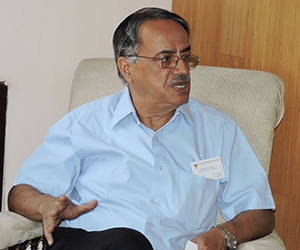


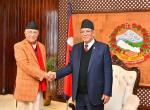
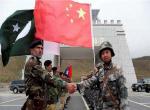

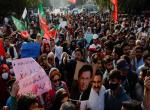

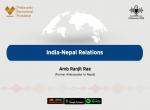
Post new comment